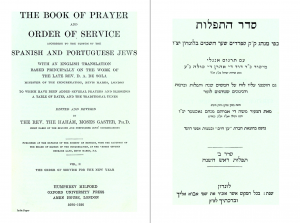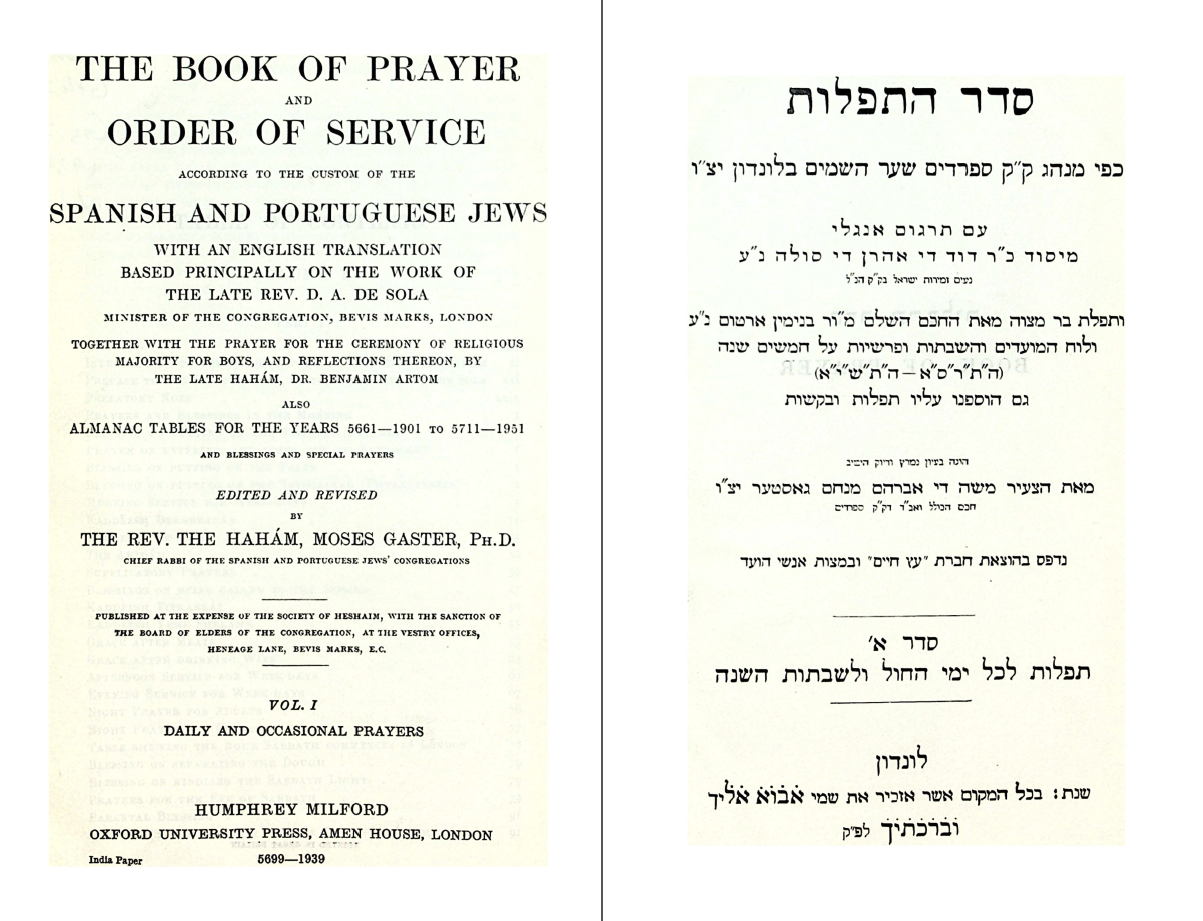
This work is in the Public Domain due to its having been published more than 95 years ago.
This work was scanned by Aharon Varady for the Open Siddur Project from a volume held in the collection of the HUC Klau Library, Cincinnati, Ohio. (Thank you!) This work is cross-posted to the Internet Archive, as a repository for our transcription efforts.
Scanning this work is the first step in a more comprehensive project of transcribing each prayer and associating it with its translation. You are invited to participate in this project!
The present volume contains the liturgy of the New Year and the preliminary Propitiatory Prayers. Known in the Bible as the Day of the joyful sounding of the Shofar, יום תרועה or זכרון תרועה, it has become in the course of time the Day of New Year, and the Day of Remembrance and Judgment. It has been invested with a special solemnity, for it refers to the most momentous events in human life. Past, present, and future are brought within our spiritual ken, through the threefold character of this solemn day. From this day we date our era of the Creation of the World. We acknowledge on it, God’s rule, his power over us and our life. We are moved to thank him for all the mercy he has shown us in the course of the year that has passed, and to pray for his favour and loving-kindness in the year that is just beginning. As the Day of Memorial, it causes contrition for the past, and fills us with hope and promise for the future. Through the sound of the Shofár, it furthermore reminds us of our allegiance to the God of our Fathers, the Lawgiver, who has revealed himself to us, and has chosen us for his own people with the sound of the Shofar. We acknowledge on this day, that God is the Judge of the world, punishing the wicked and requiting the good according to their deeds. Our future happiness hangs in the balance during this season of the year when one period closes and another begins. This is the origin and meaning of the three essential portions in the Amidah of Musaph which sum up the prominent features of the day: “Malchuyóth,” מלכויות, the proclamation of God as the King of the Universe; “Zichronóth,” זכרונות, the remembrance of man’s deeds during the year and the recognition of God as supreme Judge; and “Shofaróth,” שופרות, the Shofár heard when God revealed himself as the Lawgiver, and chose us to be his peculiar people. The Shofár reminds us also of the readiness to bring sacrifices for the maintenance of our Faith, in the same way as Abraham, in his zeal to obey Gods command, was ready to bring the greatest sacrifice asked of him. The future deliverance of our nation will also be heralded by the sound of the Shofár.
The liturgy of the New Year is a faithful reflex of these sentiments. They find expression also in the poetical com positions of some of our greatest masters, which have been incorporated into the Liturgy. The Propitiatory Prayers, or Selihhóth, which are recited in the course of the month of Elul, serve as a preparation for the gravity of the approaching solemn day. They tune the soul to a more willing disposition for introspection and self-examination, for humiliation and resignation, in God’s fatherly love. The service of the Day of New Year, in those portions in which it differs from the service of other Festivals and Sabbaths, consists of prayers and poems of gratitude, for the past mercy of God, and of hope and joyful expectation of the future grace of God. All these distinguishing passages have now been subjected by me to a very searching examination from the philological point of view, and the translation lnvs been in parts totally recast. Several additions have also been made by me, such as the introduction of Seadyah’s interpretation of, and meditation on, the Shofár. Directions have been multiplied, and many prayers and blessings used on the Day of New Year have been inserted, such as Gnerúb, Grace after Meals, Kiddúsh, Blessing of the Cohanim, Habdaláh, and Table of Dates. In addition to the Asterisks (* *) in the “Zemiroth,” the meaning of which is explained in vol. i, others have been added in the Amidáh in order to indicate the antiphonal form in which some of the principal portions of it are recited in the Synagogue on the Days of New Year. The musical notation of Jewish hymns has been added here for the first time to a Jewish Book of Prayer. The traditional tunes of these Days, kindly and readily sup plied by Mr. Jessurun, the choirmaster of our Synagogues, have been printed at the end of the volume. May the heart of the worshipper be uplifted with joyful strains to enter upon a new year of life, strengthened with the consciousness of divine protection.
M. G.

“📖 סדר התפלות לראש השנה (מנהג הספרדים) | Seder haTefilot l’Rosh haShanah, edited and revised by Moses Gaster (1903)” is shared through the Open Siddur Project with a Creative Commons Public Domain Dedication 1.0 Universal license.










Leave a Reply